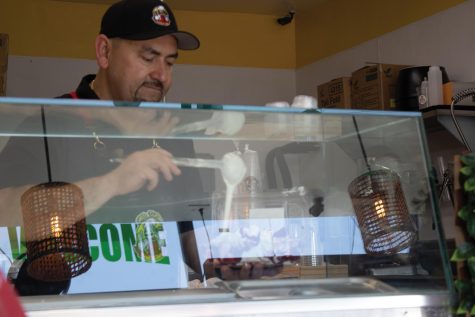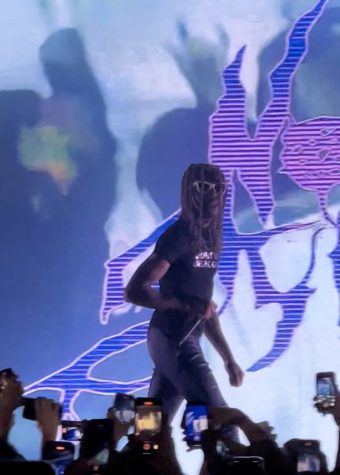The Roadrunner: The Rio Hondo College Mascot and the Puente Hills
Photo Credit: Jeffrey Barragan
Rio Hondo College opened in 1963. The following year, while the school waited for its campus to be built, its mascot was already determined, a bird local to the Puente Hills, Southwest US, and much of Mexico.
In those initial years, the Roadrunner mascot and bird were a perceived symbolic part of the Community College’s identity and local landscape.
The Rio Hondo College Mascot
An article published in the first issue of El Paisano, ‘NOSOTROS SOMOS PAISANOS’ Desert Runner Brings Luck by Dick Haslam, tells the origin story of the Rio Hondo College Roadrunner and El Paisano. According to Haslam, “The roadrunner was chosen as Rio Hondo mascot . . . by the student body . . . The first election ended in a tie between Roadrunner and Los Dorados. In the runoff election the Roadrunner won by 18 votes.”
By the time the first edition of El Paisano was printed and released on Oct. 8, 1964, Rio Hondo College was looking for a design for its already designated Roadrunner mascot.
The First Roadrunner
So, to give the new school’s mascot a real identity, Rio Hondo College announced a contest. Students attending one of the two Rio Hondo campuses could enter the contest.
But with the animated Road Runner character airing in “Fast and Furry-ous” on TVs across the nation at the time, an uncredited story in the first El Paisano newspaper made it clear that the submitted designs had to “be the original work of the student, and the Warner Brothers’ cartoon character, the Roadrunner,” wasn’t going to pass.
Rio Hondo selected its new mascot design a few weeks later on Oct. 26. Then-President Dr. Phil H. Putnam and other staff members chose the design; Don Strout was the winner of the contest.
Ten days later, the Rio Hondo College Roadrunner appeared on the first page of the Nov. 5 edition of El Paisano.
The present design of the Roadrunner mascot is drastically different from how it originally looked. Today, the design features the face of a black and brown Roadrunner with a yellow beak.
However, in 1964, the Roadrunner appeared, in its entirety, as a roadrunner, in thin yellow lines.
The decision to name the Rio Hondo College mascot the Roadrunner likely came at some point in 1963. That is the same year the location of the current Rio Hondo College campus was picked.
The Puente Hills and Rio Hondo College
One of many bird species you might encounter hiking around the Puente Hills is the greater roadrunner, or chaparral cock. However, you likely won’t see them flying around; instead, you’ll see them walking or running around.
Nonetheless, the fact that roadrunners were nearby wasn’t lost on the student reporters who reminisced about the history of the El Paisano newspaper name and the College’s mascot through the years–The Roadrunner.
The first time a roadrunner was seen around the present Rio Hondo College campus, it was a different time, place, and even a different name or two. But really, the campus wasn’t even built yet.
Two years after El Paisano began, an uncredited story published on Jan. 24, 1966, With a BEEP BEEP! ROAD RUNNER DEFIES TRADITIONS, explained why the Roadrunner was Rio Hondo’s mascot. “One of the main reasons is that Roadrunners are natives of the Whittier Hills where the new college is being built.”
Roadrunners eat a lot of different insects and small animals, including mice. Not coincidentally, in the TV series “Speedy Gonzales,” Road Runner is constantly chasing Speedy Gonzales, a mouse.
Decades later, in a 2011 edition of El Paisano, then-Professor Ray Williams wrote of his experience of coming across a roadrunner with a lizard in its beak right outside Rio Hondo, “I chanced to see a large, long-tailed bird standing on the paved road just outside the chain-link fence. I said, ‘Look! There’s a roadrunner!’ Everyone gasped in unison, since our college mascot is the roadrunner.”
Searching for a Greater Roadrunner on Dirt Paths
Already predetermined to find a roadrunner somewhere on the Puente Hills, the story made it feel more possible than before. And so there it was, the dirty, beautiful landscape, various types of plants, trees, dirt paths, and polluted air. Knowing the trails, I navigated around easily.
In a list by the National Audubon Society, roadrunners are one of the dozens of bird species listed as a Stable Species in Los Angeles County.
With the roadrunners’ obvious appearance, it seemed like one would eventually pop out of the tall grass. The bird’s large tail following it as it trailed along the dirt paths.
With summer over, the sun was already setting. The view from the hill reached out towards the mountains and the valley. The sound of birds chirping and moving around in the dry grass strands was audible throughout the hike, but no birds were visible, not from the trails, at least.
I stood around for a few minutes, hoping to catch a glimpse of whatever bird might be singing or moving around. But, no roadrunners ever made an appearance on the dirt paths.
On the way down the dirt trail, two small-brown birds flew across the side of the hill, landing on top of some dried grass.
The Roadrunner and El Paisano
After the Rio Hondo staff chose the Roadrunner as the College’s mascot in the mid-1960s, it was as if, in a morbid-sort-of-divine-, yet almost,-obvious way that the name El Paisano came into fruition printed atop the very first and every subsequent issue of the College’s newspaper.
Rio Hondo College’s mascot and newspaper names are closely interconnected, in part, together with the history and nature of the land. However, it’s not that straightforward.
The name El Paisano was mainly adopted in response to the Roadrunner mascot and some Mexican connotations.
An unfinished draft of this story with an incorrect headline and deck was published in Vol. 65 Issue 5 of El Paisano.
Jeffrey Barragan is a first-generation Chicano from the Greater Los Angeles area.








